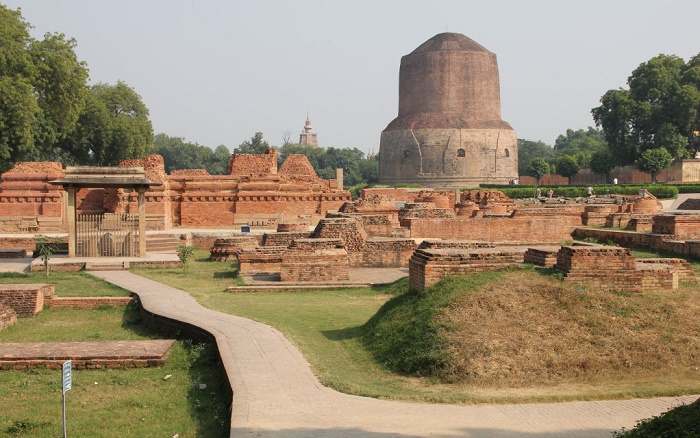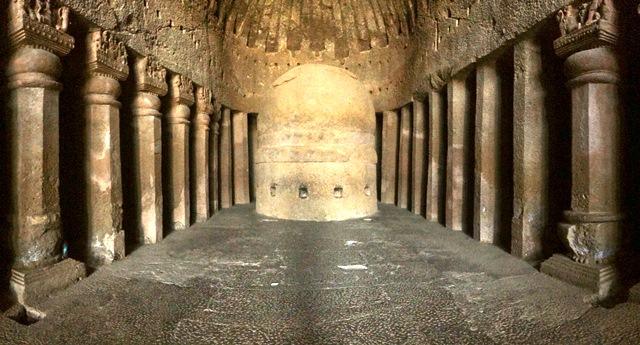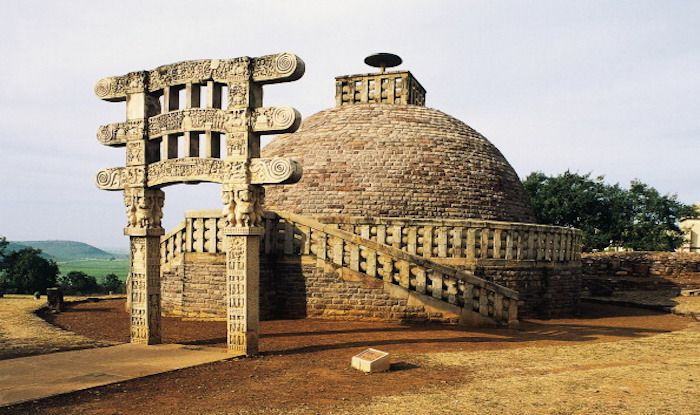- Home
- Indian Architecture
- Buddhist Architecture in India
Buddhist Architecture in India
Buddhist Architecture In India:
One of the
finest and world famous architecture is the Buddhist architecture. Buddhist
architecture started around 400 CE even before the death of Buddha. It was
during Mauryan period that Buddhist architecture developed many Buddha images.
One of the earliest and the world famous Buddhist sites include Sanchi stupa in
India. It was built by King Ashoka of Mauryan dynasty. Several pillars were
also constructed during Mauryan period.
Types of Buddhist Architecture in india
The three important elements of Buddhist architecture include Stupa, Viharas and Chaityas.
Stupa:
Stupa holds a very important place in the Buddhist architecture. Stupa is a hemispherical mound like structure which was used for doing meditation. It is usually surrounded by fence. Stupas usually have a pradakhshina path which is the culture of the Buddhism. It is believed that stupa existed even before Buddha and the Sramana (one who performs acts of austerity) were buried in seated position called as Chaityas.
The early
archaeological evidence of the presence of Stupa dates back to 4th
century BC. Some of the important and world famous stupas in India include
Sanchi, Sarnath, Amaravati, Sonari stupas and many more.

Origin of Stupas:
One of the
ancient texts of Buddhism known as Mahaparinivara Sutra mentions that the ashes
of Buddha were divided into eight portions. Each kingdom where Buddha lived
received one portion of the relics and a stupa was erected in each kingdom. The
eight stupas where relics of Buddha were spread are Rajagriha, Vaishali,
Kapilavastu, Allakappa, Ramagrama, Pava, Kushinagar and Vethapida.
Buddhists
source further claim that the great Mauryan Emperor Ashoka took a portion of
relics from the earlier stupa and erected around 84,000 stupas across India. Credit
goes to King Ashoka of building three different types of monuments like
pillars, stupas and rock cut caves. King Ashoka has set up at least 30 pillars
which have edicts and carvings on it. During
his period the word stupa first appeared on an inscription in Nigali Sagar
Pillar.
The relics of
Buddha are considered as living presence of Buddha which still has power and
energy of Buddha. It is believed that Buddha has left instructions about how to
pay homage in stupas. The stupas were highly decorated with sculptural reliefs
and the life history of Buddha.
Stupas were
built for various reasons. Based on the reason and function the stupas are
classified into five different types.
Relics stupa where the remains of Buddha and his disciple are present.
Object stupa such as the material object like begging bowl, robe of Buddha or his disciple is present.
Commemorative stupa is built to recall the events that took place in the life of Buddha. The other two include the Symbolic stupa and votive stupa.
The railings
and the gateways are the most important architecture in Bharhut, Bodh Gaya and
Sanchi. In the south it is at Amravati and Nagarjunakonda. Cross bars were
provided as support for the pillars and the domes. Above this were the finest
carvings of Buddha were kept. Some of the other carvings also included Jataka
stories, elephant, Lion, Bull and also the previous births of Buddha.
Importance of stupa in Buddhism:
Stupa became
an integral part of Buddhist architecture. It was not only considered as the
living presence of Buddha which have the protective powers of Buddha, stupa was
also considered as a place for rituals and ceremonies. It also became a
pilgrimage centre for the Buddhists.
Important stupas in India:
Some of the important and very old stupa’s that are present even to this day are
Sanchi stupa : It was originally commissioned by Ashoka of Mauryan Empire which was demolished by Pushyamitra Sunga and again rebuilt by Agnimitra and later improvised by Saatvahana Kings.
The Bharhut
Stupa: It was initially built by Ashoka but later it was improved by Sungas. It
is one of the earliest stupas to have survived.
Dhamek Stupa: It is located at Sarnath in the state of Uttar Pradesh India. It is believed to have been built in 500 CE.
Amaravati stupa:
Popularly known as great stupa at Amaravati. It is ruined now which was
probably built in phases between 3rd century and 250CE.
Chaitya:
A Chaitya is a
scared place which refers to a prayer hall according to Indian religions. In
Buddhism it refers to a prayer Hall with a stupa placed at the centre of the
hall. Unlike Viharas Chaityas have high ceilings and are narrow. At the end is
the stupa which is the place of devotion and is surrounded by circulambulating
or walking path around stupa. Some of the common existing examples for chaityas
that have survived are from the Indian rock cut architecture like Bhaja Caves
and the great Karla caves.
The Chaitya in
Bhaja Caves is one of the oldest surviving caves in India. It was probably
constructed in second century CE. It has an apsidal hall along with stupa. The
ceiling is constructed with wooden ribs and the walls are polished in the
Mauryan style. A large window is usually set up above the chaitya arch. It also
had a portico and a balcony gave the impression of ancient large mansion. Even
the Bedse Caves have similar architectural work.
Chaityas is
also referred in the Vedic literature of Hinduism and in Jain literature. One
of the important Jain site such as the Kankali Tila which is near Mathura shows
Caita tree, caitya stupa and arches along with meditating Tirthankaras.
Earlier the
Chaityas followed the apsidal (is a semi circular recess covered with semi dome)
plan and were usually rock cut or free standing. Many of the freestanding
Chaitya halls which were built using stone or brick have survived. By 10th century the Chaityas were taken over
by Viharas. The last rock cut chaitya hall that was built was Cave 10 at
Ellora. The last freestanding chaitya hall may be Durga temple at Aihole.
Viharas:
Viharas means
small centred halls sometimes connected with beds which are carved from the
stone. Unlike Chaityas Viharas are small. Some of the large caves like Ajanta,
Ellora, and Aurangabad caves and Kanheri caves. The two viharas cave 5 in
Ellora and cave 11 at Kanheri both have low platforms. They were mostly used as
combination of benches or tables for dining or as desk for studying or for any
other important activities.

During Ashoka
period Viharas were mostly stop and take rest during travel time. Buddhists
Viharas meant as a place of residence for monks and also a place for religious
work and Buddhist learning. Monks wandered from one place to another by preaching’s
the principles of Buddhism. During rainy season or when these monks wanted to
rest they stayed in temporary shelters or in Viharas. According to Buddhists
texts there are mainly five kinds of residing or dwelling place namely Vihara,
Addayoga, Pasada, Hammiya and Guha. Among all other kinds only Guha and Vihara
have survived.
Please share your views with us by clicking the link here
Related Pages
European Colonial Architecture
Update on coronavirus in India
Affiliate Disclosure:
If you make any purchase via a link on this site, I may receive a small commission with no added cost to you.



